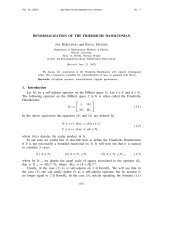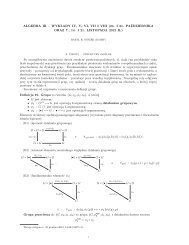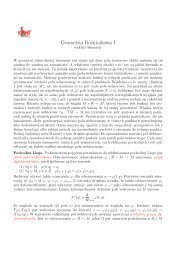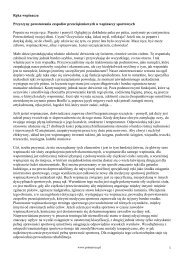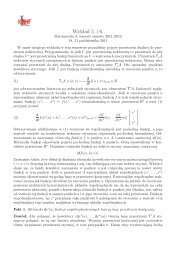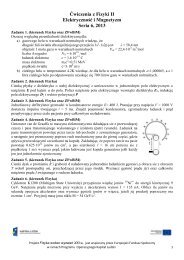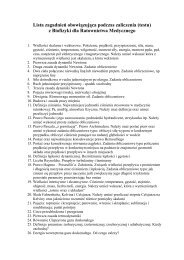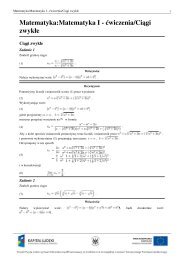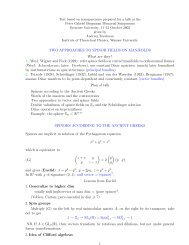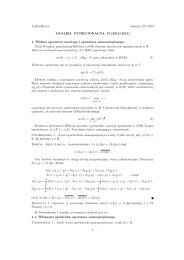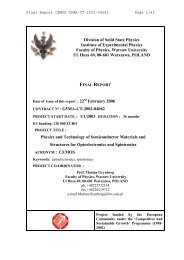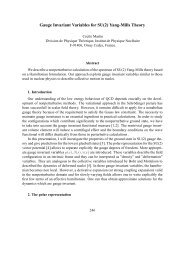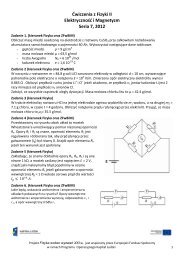XXth century_physics
XXth century_physics
XXth century_physics
Create successful ePaper yourself
Turn your PDF publications into a flip-book with our unique Google optimized e-Paper software.
"It thus appears that we must abandon the identification of the holes with<br />
protons and must find some other interpretation for them. Following<br />
Oppenheimer, we can assume that in the world as we know it, all, and not<br />
merely nearly all, of the negative-energy states for electrons are occupied.<br />
A hole, if there were one, would be a new kind of particle, unknown to<br />
experimental <strong>physics</strong>, having the same mass and opposite charge to an<br />
electron. We may call such a particle an anti-electron. We should not expect<br />
to find any of them in nature, on account of their rapid rate of recombination<br />
with electrons, but if they could be produced experimentally in high vacuum<br />
they would be quite stable and amenable to observation. An encounter<br />
between two hard γ-rays (of energy at least half a million volts) could lead to<br />
the creation simultaneously of an electron and anti-electron, the probability<br />
of occurrence of this process being of the same order of magnitude as that<br />
of the collision of the two γ-rays on the assumption that they are spheres of<br />
the same size as classical electrons. This probability is negligible, however,<br />
with the intensities of γ-rays at present available. The protons on the above<br />
view are quite unconnected with electrons. Presumably the protons will have<br />
their own negative-energy states, all of which normally are occupied, an<br />
unoccupied one appearing as an anti-proton. Theory at present is quite<br />
unable to suggest a reason why there should be any differences between<br />
electrons and protons...„ Paul Dirac (1931)



